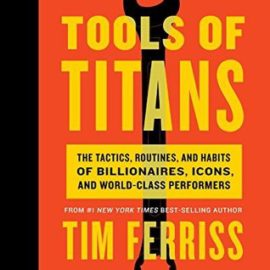
The First 90 Days is a field guide for anyone undergoing professional transition. Through an eminently practical approach, it builds out a map for your first 90 days in a new role (whether that entails a promotion, a geographic move, or a lateral transition into a new company). Within that map, the book covers key aspects of such a transition including:
- How to effectively gather essential knowledge about your new role
- How to develop strong relationships with your new colleagues
- How to achieve wins early on
- How to grapple with the personal and psychological implications of the transition
Peppered throughout the book are concrete exercises and action points, which can be replicated for any job transition and will continue to serve as essential tools over the course of one’s career.
1-Page Summary of The First 90 Days
If you’re preparing to enter a professional transition—perhaps by accepting a promotion, moving to a new geographic location, or shifting laterally into a different unit—this book will provide you with key principles for setting yourself up for success in the first 90 days of your new role as well as practical exercises for implementing those principles throughout the transition process. Ultimately, after completing the book, you’ll be poised to efficiently move towards the “break-even point” in your role, whereby you have contributed as much to your new job as you have received from it.
The goal for your first 90 days is to avoid the traps that can lead to vicious cycles down the road (e.g., choices that undermine your credibility or erect structural or cultural barriers for your transition) while focusing on positive principles that can create virtuous cycles to support your success. Ultimately, this book will discuss several essential themes, including:
- The importance of gathering information early on about the overall strengths, weaknesses, opportunities, and threats for your company and using that information to better understand the unique skills, leadership styles, and expectations that will be pertinent to your new role
- Helping set yourself and your company up for success by developing a strategy that is grounded in a nuanced understanding of the company’s developmental stage and how it can best align its overall vision with its day-to-day operations
- Working with your boss and your direct reports to clearly outline expectations for everyone’s roles and to help define success and plans of action early on
- Identifying early wins and building alliances to achieve those wins in a way that will prop up your credibility and support your longer-term vision for your role
- Recognizing and preparing for how the transition will impact your personal life and your family life as well as helping your company support all team members in their own job transitions by institutionalizing effective and reliable acceleration systems
Information Is Power
As you begin your new role, information is power. Although it might seem tedious at first, gathering as much knowledge as possible early on about your position or company will accelerate your success in the long-term. Gathering this information will also help you avoid a few traps, including:
- Trying to enact sweeping change without knowing the history of the company
- Falling prey to the action imperative, whereby you are so concerned with making your mark right away that you take action without careful thought, which ultimately is not conducive to your long-term goals
- Undermining your credibility early on by coming across as a know-it-all before you have engaged in sufficient learning about your company
The first step in your learning process will be to identify essential questions to be answered, perhaps about your company’s history, its current operations, or its vision for the future. Think creatively about where you can turn to answer those questions. For example, you may gain helpful insights both from external sources (customers, suppliers, or key stakeholders) and internal sources (heads of departments, sales staff, or long-term employees with a broader arc of insight).** **
Consider also which processes will be most effective in gathering the desired data. You may want to conduct systematic interviews with all of your direct reports or you may decide instead to send out surveys, have a retreat, or schedule tours of key facilities.** As you access more information, begin to analyze the strengths, weaknesses, opportunities, and threats (known as the SWOT) for your company in order to gain essential insights about best next steps for your role. **Also use this information to better understand the ways in which you may have to adapt from your previous approach or style.
For example, if you’ve accepted a promotion, you’ll need to create a delegation plan that is informed by the specifics of your new role, including the size of your team or the tasks that must be accomplished. Remember too that in your new leadership role (and perhaps in contrast to your previous position) **even the small choices you make—how you treat people or how you handle minor challenges early on—will contribute significantly to your overall reputation. **
Alternatively, if your professional transition entails joining a new company, you may want to use the first 90 days to focus on different considerations, such as developing a nuanced understanding of the company’s culture (which often consists of unspoken norms and assumptions related to communication, dress, and so on) or building connections with key stakeholders.
However, **regardless of the transition type entailed, it will also be important for you to identify the skills or areas you might have a tendency to default to if or when you are feeling insecure. ** It’s common to lean too heavily on those tendencies during times of transition, which ultimately prevents you from being fully open to the new approaches that might be necessary for achieving success.
Finally, for all job transitions, psychologically demarcate your transition (perhaps through a formal ceremony or personal celebration) to begin the process of relinquishing an attachment to how things were done in your prior role.
Your Company’s Success Is Your Success
Understanding the current stage of your company’s business development will be essential for building a strategy for success. The five most common stages include:
- Start-ups (new companies)
- Turnarounds (struggling companies)
- Accelerated growth (rapidly expanding companies)
- Realignment (companies in need of a reboot)
- Sustaining success (flourishing companies which require planning for long-term growth)
Each of these stages (known collectively as STARS) will present their own unique challenges that should inform how you approach your new role. For example, start-ups will often be defined by strong energy and vision but may lack necessary structure. By contrast, a company in realignment may be defined by complacency that demands a shake-up to avoid stagnation. These five stages may exist in a company of any size or shape, and it’s possible for one company to be experiencing several stages at once.
Once you have identified which STARS stage is applicable to your work, use that information to determine an appropriate leadership style for moving forward. Two common leadership styles include **the “hero” approach, whereby the leader boldly takes the reins to move the company in a new direction, and the “steward” approach, **whereby the leader deftly applies diplomatic processes to enact more subtle or incremental change. While you may be naturally inclined to one style over the other, don’t allow those natural inclinations to trump what’s best for your company. A turnaround in need of drastic change would not be served well by the steward approach, whereas a company in realignment would likely react negatively to a “hero’s” attempt to swoop-in and aggressively disrupt the status quo.
While a keen understanding of your company’s STARS stage will help inform how you approach the new role, your ability to succeed will also be largely informed by your company’s overall ability to align its vision with its operations and implementation. **If a business is out of alignment—because it’s experiencing tensions between key mechanisms such as strategic direction, organizational structure, core processes, or skill bases—it will quickly hit a ceiling for attaining further growth. **For that reason, it’s important to use your new role as an opportunity to evaluate ways in which any such tensions can be resolved.
Use your first 90 days to diagnose any misalignments. For example, there may be a misalignment between the direction your company wants to grow into and the current skill sets within the team.
Consider the following steps to conduct your diagnosis:
- **Develop a clear understanding of your company’s vision and strategic direction so that you can evaluate how that vision is being implemented. **To aid in that process, consider meeting with your boss or other company leaders to learn more about the origin story of your company’s vision.
- Determine whether the necessary skills, organizational structures, and processes are in place to accomplish the identified strategic direction. You may be able to do so by reviewing records such as mission statements, budgets, annual reports, and so on.
Through this process, you may identify areas that need to be adapted or improved. As you do so, keep in mind that deciding how to structure your company (i.e., how to group employees into units, how to organize reporting and supervision, and so on) can be particularly tricky. **Be careful about engaging in any restructuring before you have a clear understanding of its potential consequences and without taking into consideration the possible push back, **as people can perceive a restructuring as scary and threatening. Finally, remember that no one structure is perfect but that your company should determine which set of trade-offs make the most sense considering the articulated vision and the STARS stage(s) pertinent to your company.
Invest in Interpersonal Relationships
**There are two key interpersonal dynamics that will fundamentally impact the transition into your new role: your relationship with your boss and your relationship with your team. **Both require an investment of time and a deliberate approach.
As you build a foundational relationship with your boss, consider the following:
- It’s important to ensure that you are both on the same page about which STARS stage you are operating in so that you can appropriately align later conversations about expectations and resource allocation.
- You can help inform your boss’s expectations for your role by initiating a conversation about what success should look like both short and long-term.
- There are benefits to building credibility early on by under-promising and over-delivering and by keeping lines of communication open in case expectations shift over time.
- Advocate for yourself by telling your boss about what resources you’ll need to be successful. Connect the dots clearly for him by explaining, “If you want X, I will need Y.”
**Just as important as these substantive conversations about your role will be stylistic conversations about how you and your boss will work together. **Gather information from other team members for initial insights about your boss’s style and consider asking your boss directly about how she likes to communicate and when she will want to be folded in to your decision-making processes.
At the end of the first 90 days, consider scheduling a personal development conversation with your boss that focuses on how things are going so far in your role, (i.e., what is going well, and what could still be improved).
The first 90 days will also be an essential period for developing strong foundational relationships with your direct reports. Essential to that foundation will be evaluating your team members using a fair and consistent process that allows you to determine whether any human resources changes need to be made. To do so, use the following steps:
- Identify the key evaluation criteria for a given role such as competence, judgment, trust, and interpersonal skills.
- Create consistent questions to be used in one-on-one meetings to measure those criteria for each team member.
- As you prepare for those meetings, remember to consider how your company’s STARS stage might inform your determination about which roles or competencies are most important for success.
Once your evaluations are complete, categorize each employee based on whether they should stay in their current role, be moved into a different role, or be let go. Keep in mind that firing employees can be complex due to legal requirements and emotional impact on the team. Therefore, always consider alternatives to firings such as lowering an individual’s level of responsibility or shifting them into a different role or part of the company where they may be more effective.
After building your team, consider how best to align it for success by using both push and pull tools to motivate your team members.
Push tools create accountability and incentive mechanisms that catalyze action through fear, reward, loyalty, and authority. Examples include explicit performance metrics (e.g., 10% sales increase by the third quarter) and reward regimes (usually through a combination of fixed and performance-based monetary awards as well as other job benefits).
**By contrast, pull tools catalyze action through a sense of shared vision and aspirational goals. **You can create a powerful vision by using metaphors and evocative language, consistently repeating the core traits of the vision, and bringing other key actors on board to communicate the vision widely.
Finally, consider how you’ll approach leading your team. Gather information about how your predecessor conducted meetings and communicated so that you can identify areas for improvement. Be thoughtful about how you make decisions—whether through a consensus-building model or by consulting with team members and ultimately making the decision yourself. The consensus model might be helpful if you’ll rely substantially on others to get the project done, whereas the consult-decide model could be more appropriate for an inexperienced team or if you are seeking to establish some authority early on.
Achieve Success Early On
Use your first 90 days to build a foundation for your overall success by securing early wins that also support your long-term vision and goals. Identify possible early wins that will be grounded both in the expectations for your role and also in your boss’s priorities. This will help you avoid superficial early wins that might be easy to knock out of the park but that ultimately fail to support your long-term goals and therefore are a waste of time. You should also use your company’s STARS stage to inform your early wins and consider which resources you have access to that will better support certain early win projects.
**Once you identify an early win project, build the credibility needed for moving the project forward. **You can accomplish this by developing a respected leadership brand and by staying open-minded to accepting the input of others while still being decisive and setting high expectations. Remember that starting on day one perceptions about your leadership style will begin to form and will be informed by each decision you make, big or small.
Next, you’ll need to implement the early win project effectively by:
- Helping your team understand the vision for your early win and why it’s valuable
- Clearly articulating the plan for next steps
- Staying cognizant of any potential threats to your early win project, including internal political or cultural threats, or external threats such as changes to the market
As you prepare to execute your early win project, remember that even the best leaders will have to depend on thoughtfully created alliances to support their business goals. Because you are starting in a new role, you’ll need to quickly get the lay of the land by identifying the key individuals who exert influence over your work and the company as a whole. During meetings and other interpersonal engagements, observe which team members are respected for their unique expertise, who commands a strong sense of personal loyalty, and who has control over needed information or resources. Use these observations to evaluate what combination of individuals together could constitute a winning alliance for supporting your goals. Use that same information to also analyze whether there is any group or individual that might build a blocking alliance opposed to your projects.
Once you understand the dynamics at play, work hard to influence the game board. Even if someone is currently opposed or agnostic to your vision, never assume that they can’t be persuaded. Try to find areas of common ground whenever possible. Consider whether you can assuage any concerns by articulating an incremental plan of action (that will not result in too much change too soon) or by framing the issue differently for different actors (perhaps by appealing to logical arguments for some and values or emotion-driven arguments for others).
**If you need more allies and are uncertain where to turn, try approaching other new hires or notably open-minded and creative thinkers. Try also to bring actors who exert substantial social influence on board as early as possible. **And, if necessary, use action-forcing events such as deadlines or meetings to catalyze movement forward when your alliance-building strategy has otherwise stalled.
Build Healthy and Sustainable Transition Processes for Everyone
Your transition into a new job will inevitably have substantial consequences for your personal life and for your family. **If your stress levels become too high trying to navigate that personal transition, you’ll risk hitting a stage of burnout, which will undermine your success overall. **Stay attuned to the range of reactions that might arise within you during the transition, including excitement, uncertainty, or disconnect. Consider also the possible situational and personal obstacles you may face, including common defense mechanisms such as failure to draw boundaries, avoidance of challenging decisions, or a sense of isolation in your new environment.
To combat these possible pitfalls, create regular routines to give you direction and structure by:
- Avoiding the tendency to overcommit early on
- Blocking off time in your calendar to engage in moments of reflection about how you have reacted to or handled early challenges
- Being proactive when it comes to facilitating your family’s transition by supporting your partner’s job search if necessary, reestablishing family routines as quickly as possible, and using your company’s relocation services, as available
**Additionally, remember to build and nourish your personal support network by investing in mentor relationships both inside and outside of your organization, **including technical advisers, cultural interpreters, and political advisers who can provide you with a diverse range of counsel during the transition process.
While you are investing in a healthy job transition for yourself, consider that your company is also regularly transitioning other team members into new roles and that everyone will achieve much greater success by institutionalizing reliable acceleration processes across all positions.
You can aid in developing those processes by evaluating your company’s current transition support practices and by identifying ineffective approaches such as inadequate training programs, poor succession planning, or a failure to clearly convey expectations for new roles. If possible, consider implementing a “common core model” that provides consistent and reliable processes and resources for all acceleration stages across the company.
Such a model may still require customization depending on the leadership level that is implicated in a given job transition (with executive roles appropriately requiring greater resourcing). But **all roles will benefit from the thoughtful integration of talent management systems **(e.g., effective collaboration between the recruitment and onboarding teams) to support the company’s vision and ensure that key values are being consistently pursued at all stages of the hiring and transition process.
**Remember also that the acceleration process can benefit from the broader involvement of other individuals and team members such as supervisors and direct reports. **Create structured roles for these individuals in the transition process so that they are clear about when and how to best contribute to the acceleration of new team members.
When all team members are adequately supported to maximize success in their roles, both you and your company will be better positioned to flourish.
Full Summary of The First 90 Days
Introduction
Professional transitions, such as shifting locations, moving internally to a new unit, or accepting a promotion, are becoming more and more common, as most individuals will experience an average of 13.5 major transitions for 18.2 years of work, or one transition every 1.3 years. Such transitions present great opportunities and also many challenges as a new role allows you to start fresh and have a strong impact but also exposes you to new and heightened scrutiny**. Once opinions are formed about you, they’re hard to change. **So starting off on the right foot is key. That’s why this book focus…
Read the rest of the “The First 90 Days” summary at my new book summary product, Shortform.
Here’s what you’ll find in the full The First 90 Days summary:
I’ve been building Shortform for the past year. It’s the book summary product I always wanted for myself. I was never satisfied with the summaries from what was on the market, and so I built Shortform for myself and readers like you. If you like my book summaries, you’ll love Shortform.
Shortform has the world’s best summaries of nonfiction books and articles. Even better, it helps you remember what you read, so you can make your life better. What’s special about Shortform:
- The world’s highest quality book summaries—comprehensive, concise, and everything you need to know
- Broad library: 1000+ books and articles across 21 genres
- Interactive exercises that teach you to apply what you’ve learned
- Audio narrations so you can learn on the go
- Discussion communities—get the best advice from other readers
Sound like what you’ve been looking for? Sign up for a 5-day free trial here.





